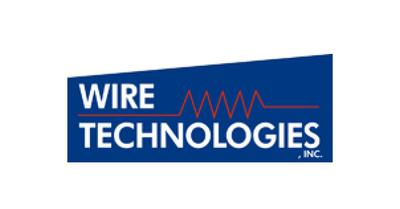Paessler PRTG helps Smooth Fusion meet the digital needs of today’s marketers
About Smooth Fusion
Smooth Fusion is a custom web and mobile development company that creates functional, usable, secure and elegant software while striving to make the process painless for its customers.
A fast growing partner to some of the best known brands and established specifically to meet the needs of marketers, Smooth Fusion is a technical group comprised of strategists, project managers, software engineers, developers, designers and quality assurance professionals that help the company’s customers bring their digital strategies to life. This includes not only building websites, but anything related to their operation and use, from their optimization for mobile devices to compliance with the American with Disabilities Act.
The company’s teams have extensive experience creating the systems today’s tech-enabled marketers rely on, including systems and solutions for content management, e-commerce, social media applications, databases, quality assurance testing, privacy and security, portals and intranets, multi-lingual websites, and integration – just to name a few. And of course, Smooth Fusion’s teams include experts in user experience and graphic design.
In addition, Smooth Fusion offers a managed service for customers who want a partner who can host their website in the cloud. The company’s experts handle all of the technical issues involved with the operation and maintenance of the site – freeing customers to fully concentrate on the site’s content and what it conveys about their brands.
“This is both a time of great opportunity and great challenge for marketers,” adds Evans. “Modern websites, applications and online tools make this a golden era for new marketing techniques and strategies, but the online presence marketers envision requires significant technical acumen to become a reality. Most marketers don’t have those skill sets, and most IT professionals and developers don’t understand marketing. That’s where Smooth Fusion comes in. Our teams of developers and specialists bring extensive marketing and IT expertise to their work and bridge the gap between both disciplines.”
“Ping sensors are great, but they only tell you an IP address is up and running, not that it is running correctly. We program our PRTG HTTP advanced sensors to return specific text. That way we know if website visitors or consumers to an e-commerce site are seeing what they should, not that the site is up and returning pings but showing an error page.”
Gary Evans, Director of Information Technology at Smooth Fusion
Supporting developers
When Gary Evans, director of information technology at Smooth Fusion, describes his role, it quickly becomes clear that he approaches his work with the humility often encountered among information technology’s (IT’s) super heroes.
“At our core we’re a web development shop that provides today’s marketers with everything they need to create and maintain a highly effective digital presence,” says Evans. “We build, maintain and host websites and create everything within them that marketers need. I support the development process and manage the development environment so our developers can do their best work.”
The IT team supports the development process and corresponding development environment, including the servers and databases within it and the software and hardware the company’s developers rely on. The IT team is also responsible for the staging area for the websites being created, as well as the systems used in the roll out to each client’s production environment, or alternatively the cloud environment where customers can elect to have Smooth Fusion host the site.
Evans points out that the developers the IT team supports are typically quick to act when a problem arises.
“We are fortunate to work with exceptionally talented developers, so when there is a problem with an internal system, they often react quickly with a fix,” notes Evans. “Regardless, it’s imperative that we always know what’s going on in our own infrastructure and be prepared to take action. For example, if a server being used by a development team is running low on capacity or periodically showing an increase in temperature that might indicate a fan is on the verge of failing, I want to know about that before it becomes an issue and interferes with our teams’ ability to work in any way. I want to know when it still has 10 gigabytes of free space, not 10 megabytes.”
To ensure that IT knows whenever an issue arises, Evans and his team configured their on-premises deployment of PRTG Network Monitor to send a text alert to their cell phones if any pre-determined performance thresholds are reached.
Smooth Fusion also periodically draws on the flexibility of PRTG to monitor physical infrastructure with custom sensors associated with the internet of things, or IoT.
When the company originally began working with Paessler more than a decade ago, Evans earmarked PRTG as an effective way to safeguard against any problems within the company’s data center.
One of the first uses was to include a temperature monitor in the data center – something that shortly thereafter averted a crisis on a hot summer weekend in Texas. Alerted of rising temperatures in the data center by PRTG, Evans and his team quickly went to the office and found that the air conditioning unit for the data center wasn’t working and much of the equipment in the data center would soon shut down automatically to avoid overheating. The team immediately opened the room to ventilation and put fans in place before there was any impact on the network’s performance.
“I’ve almost taken it for granted how nice it is to know if a disk is getting low on space, if a switch is not working or if a fan on a server is failing,” says Evans. “Network monitoring is your early notification system. It makes life so much easier by providing the early warning you need to avoid true emergencies.”
Safeguarding customer's websites
In addition to monitoring Smooth Fusion’s own IT infrastructure and development environment, Evans also uses PRTG to monitor clients’ websites, including those that are hosted by the company, are being rolled to clients’ production environments and even some that are already in production with clients who still appreciate having a vigilant partner keeping watch on their behalf. In total, Evans and his team are responsible for monitoring the performance and operation of 50-60 websites at any given time.
PRTG is used to monitor a number of different variables on the sites. These include checking to ensure that SSL certificates are always valid, making sure all sites are up and functioning properly at all times, monitoring for any suspicious activities that might indicate a security breach or similar concern, such as a denial of service attack, and other issues.
Innovative monitoring solutions in the cloud
First though, Evans had to figure out how monitor the things he wanted in a cloud and virtualized environment. “We use Microsoft Azure in conjunction with Azure App Service Web Apps (Web Apps) and virtual machines because they provide the redundancy and global scale that no hosting provider can equal on its own. By taking that approach, we add a significant margin of safety for our customers. Even so, we still want to be able to monitor the sites and make sure everything is as it should be. We also approach our work with a keen understanding that in this day and age, having a website go down can have an immediate and highly detrimental impact on any business, so it’s critical that our clients’ sites be up and running as they should at all times,” says Evans.
For Smooth Fusion, the challenge was that when using Web Apps you do not have access to the underlying virtual machine, but instead have access through the Azure portal. Also, when you spin up a virtual machine (VM) in Azure, it can “live” in any number of data centers – and often travels within the cloud as needed and as expected in any virtualized environment.
To address this reality, the team at Smooth came up with an ingenious approach. First, it created an ASP.net webpage that monitors the name of the VM. A PRTG probe is installed on the VM, which PRTG then monitors by name. And if the site goes down, the team knows if PRTG received a notification that the name of the VM has changed. If so, it’s immediately clear that Azure simply moved the site from one underlying VM to another – for example to conduct maintenance.
“We wanted the safety, global scale, and high availability that Web Apps and Azure make possible for our customers, but we also wanted to make sure that we are still the first to know if there’s an issue in the underlying infrastructure, whether that’s on premises in the client’s production environment, in the cloud, or on a server that’s functioning as a virtual machine. The inherent flexibility of PRTG enables us to create a solution that makes all of that possible while still providing our customers with the many benefits that stem from hosting their sites in Azure,” says Evans.
Specifically, Evans uses PRTG’s SSL certificate sensors, as well as a number of different SNMP sensors to monitor variables like memory, disk space, and CPU usage, while for Windows machines he often uses Paessler’s WMI sensors as well. In addition to running diagnostics on all necessary hardware, the SNMP sensors are also used to gauge bandwidth usage – a capability that alerts the team whenever there’s a significant increase in bandwidth usage or when it reaches any number of pre-set levels – functionality Smooth Fusion’s team uses to detect any distributed denial of service (DDoS) attacks or other issues.
Evans and his team also actively test clients’ websites not only to make sure they are up and running, but they are functioning exactly as they should for customers. The team uses PRTG for this as well. Evans notes that the ping sensors for PRTG are great to ensure that a site is up and running and that his team uses them a lot; however, he also recommends the use of HTTP advanced sensors.
“Ping sensors are great, but they only tell you an IP address is up and running, not that it is running correctly. We program our PRTG HTTP advanced sensors to return specific text. That way we know if website visitors or consumers to an e-commerce site are seeing what they should, not that the site is up and returning pings but showing an error page.”
In addition, the team at Smooth Fusion used PRTG’s flexible dashboard to create a network operations monitor, a large screen from which the they can see in a glance how the company’s IT infrastructure and clients’ websites are performing. The screen, which is customizable to reflect the work being done at Smooth Fusion, monitors a number of criteria, from the temperature of the company’s data center in Texas, to the sites are the slowest and those that are using the most bandwidth. The dashboard has been in use for nearly seven years and has added a significant level of convenience.
The result
Through its use of PRTG, the IT team at Smooth Fusion is able to actively contribute to the company’s core mission. With a real time view over its entire IT infrastructure, including the networks, systems, hardware and software that comprise it, as well as the devices that tie into it, Evans and his team are able to ensure that developers’ have the tools at their disposal to create industryleading sites, applications and a brand-strengthening presence that enables the most innovative and talented marketers to achieve their online vision – all while safeguarding the many brand-name websites the company hosts and maintains.
Perhaps most telling, Evans and the IT team at Smooth Fusion enjoy the peaceof-mind of knowing that if an issue arises, they will be the first to know about it.
Conclusion
Evans concludes: “If you aren’t monitoring your IT infrastructure, you probably have a lot of emergencies. Monitoring is what enables you to address any issues when things are starting to go bad rather than when they have completely failed. The importance of always having a real-time view over your network and what’s happening within it can’t be over stressed. And that goes for any network. I don’t understand why everyone isn’t running PRTG on some level. I’ve recommended it to many businesses, churches, summer camps and other non-profits. Download the free version, try a few sensors and check it out.”
Get to know more happy PRTG customers
Customer success story Wire Technologies & PRTG
PRTG allows Wire Technologies to monitor temperature and humidity sensors in its server rooms to protect expensive hardware from environmental damage. ➤ Read the complete customer success story now!
Customer success story ADITUS & PRTG
ADITUS ensures smooth operations at trade shows through reliable monitoring for cash registers, access systems, and visitor registration with PRTG. ➤ Read the complete customer success story now!
Customer success story DR. ERLER KLINIKEN & PRTG
DR. ERLER KLINIKEN uses Paessler PRTG to monitor IT and medical infrastructure 24/7, prevent downtime, and ensure reliable patient care through proactive diagnosis. ➤ Read the customer success story!



